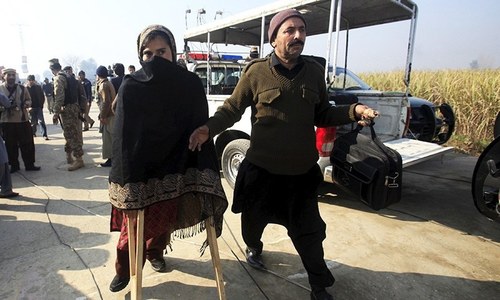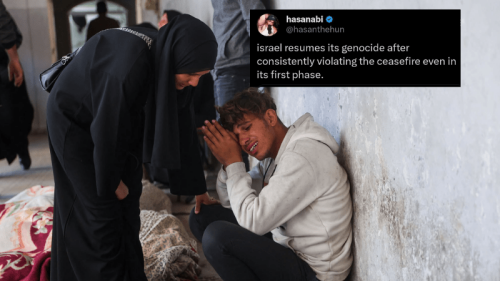A number of voices have been raised to question the authorities on what is being done to secure educational institutions in Pakistan from attacks.
To be honest, terrorist attacks are something no educational institution can defend itself from, but having said that do our campuses even have a basic safety plan?
As a parent, a relative of students or as a concerned citizen here are some of the safety questions you need to take up with educational institutions across the country:
Student's emergency records
Does the school have an emergency record for the student? If not, then start with this basic step and ensure that it’s easily accessible in emergencies (online, softcopy, hardcopy).
Information on the emergency record should contain but not be limited to:
Name of guardians
Emergency contacts
— Known ailments or handicaps
— Known allergies or reactions to medicines
— Blood type
Issue an ID card to every child with this info, ensuring that they wear it or have it with them at all times while in school.
School emergency contacts
For parents / guardians:
Do you have the school’s contact number on you at all times?
Do you know who to call?
For Schools:
Have you established an emergency contact number and shared that with the teachers, parents and students?
This number should be dedicated for the parents or guardians who want to know about the welfare of their children. It must also be provided sufficient access to information on the student to ensure they provide details only to genuine callers.
Do you have the contacts of the relevant authorities who you may need to rely on in an emergency?
It is equally important for schools to establish a relationship with services (like ambulance, fire services, police, utilities [gas, electricity, water]) that cover their area. Invite them over to the school so they know where it is and know who you are.
Safety training
When was the last time the institute had an emergency drill?
Have students and staff been:
— Given basic first aid training
— Been taught the basics of fire safety
— Educated on what to do during an earthquake tremor
— Trained on response to some major security threats
In emergencies older students may be effective support in response efforts; therefore, implement a training programme for the appropriate age level.
Emergency services across the country volunteer their time and effort towards educating institutions on safety. Professional services can easily be engaged for a fee as well.
Remember, what you teach the children in school may serve them elsewhere.
Transportation
If the student is picked or dropped in a personal vehicle, then consider:
— Who’s authorised to do so and how do you confirm it?
Many private schools have introduced ID cards with the child’s picture and class mentioned on it. Whoever needs to pick the child must have the card. If the school is unsure of the genuineness of the person they’ll hold back the child and call the emergency number provided to them and confirm.
If the child is permitted to leave school on their own then has the school been informed as such?
— If on a regular basis then the school should be informed once
— If on an occasional basis then the school should be informed each time
How effectively this can be implemented depends on many factors but it’s important to discuss it with the school authorities as a parent. It’s equally important for schools to realise their responsibility towards the safe exit of the child.
If school vans / buses are used then do you:
— Know if the school has a recommended service?
— Know the drivers contacts?
— Know the vehicle number?
— Know the approximate time it would take to reach school or home?
— Randomly check with the driver of any concerns or other matters?
The purpose of such measures is to introduce a check and balance and keep everyone — parents, transporters and school management — alert.
Physical security
Primary focus should remain on the perimeter making it difficult for unauthorised people to access the facility.
— Ensure the surroundings are kept clear of objects that obstruct clear view.
— Ensure all entrances/ exits are properly manned and locked when not in use.
— ‘No Parking’ enforced in front of the exit and entrances and to a safe distance on either side.
— Where possible have CCTV coverage of entrances and exits that is monitored by the security guard or gate keeper, particularly when the school is in session.
Inside the school premises, consider having a safe haven/ room. The building structure itself can be enabled to lockout unauthorised persons.
Install alarms that can be activated safely from inside that sound locally and remotely.
In case of a remote alarm an appropriate service can be set up with private security partners or even authorities who will respond.
Benefit of a local alarm is that it can alert the neighbours who can also ensure authorities are informed. In some locations there are multiple schools in a small area and the alarm could serve to warn neighbouring schools as well.
In summary, parents and schools have to come together and review all they can do at their end. The capacity of the authorities to deliver an effective plan will rely on the basics being put in place by the institutions.
The elements for an effective safety and security programme need to consider:
— Engagement with the appropriate experts and authorities
— Survey of the school for safety and security improvements
— Formation of a team of school staff and parents and even senior students if appropriate
— Setup an effective communication system
— Define, train and practice your plan.
Published in Dawn, Sunday Magazine, January 4th, 2015

















































